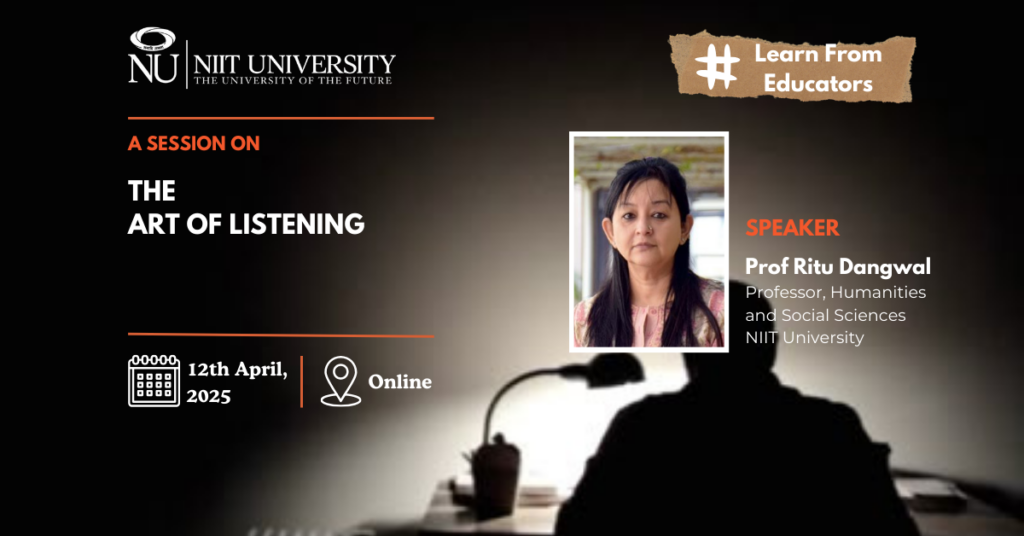Did you ever get the feeling when you weren’t being heard that you somehow disappeared and that your voice went poof into the air? Professor. Ritu Dangwal stated that talking isn’t communicating—listening is being heard. Done with care, active listening fills in the gaps, makes it stick, and creates real trust. Between children and parents, students and professors, and friends, listening empathy is the capacity to move transactions into acquaintanceships through meaning.
Why Active Listening Matters?
Listening is more than hearing noise—it’s an emotion that needs proximity. Professor Ritu Dangwal said that in the kind of world we live in today, where everything rushes by, distraction can quite easily take our place in communication, and it is easier to mishear other people or slip over sensing behind words. Misunderstanding yields frustration, missed possibilities, and distorted relationships. But through active listening, we make people feel heard by giving importance to their feelings, ideas, and thoughts. There is built trust and deepened open and sincere communication.
The Costs of Effective Listening
Since listening is a muscle that atrophies through disuse, listening will atrophy if not practised daily. Negative listening habits like
– interrupting someone when he or she speaks
– talking while doing something else
– restless or gestural facial reactions that react too quickly
– distracted thinking rather than concentrated listening
These communication patterns create broken emotional connections, and the speakers become unheard or ignored. Unvented feelings and misunderstandings, looking backwards in time, accumulate and increase and add to building anger. Reconnection can only occur again after each has listened and heard.
The Five Steps of Listening
Professor Ritu Dangwal mentioned that listening is more active thinking and processing than conveying or hearing words. These five steps are a formula for effective communication:
1. Receiving—Single-minded attention to the speaker.
2. Knowing—Translating and interpreting meanings into words.
3. Remembering—Committing key facts to memory in advance of demonstrating worth.
4. Evaluating—Interpreting the message through the application of sense and compassion.
5. Responding—Allowing verbal and non-verbal comments to pass to enable reception.
For instance, if the teacher replies to a curious comment of a learner with the comment, “It sounds magical, doesn’t it? Let’s have a look at it together,” then he or she develops a culture of trust and not a culture of correction. Such discipline merges education and creates increased understanding.
The Role of Listening in Education
Good active listeners are a community where student autonomy and respect come to life. Rather than lecturing, they listen, hear, and speak. Thus, by doing so, there is a building of trust, and they are not hesitant to make things public with these types of individuals without any form of judgment. When students are given a hearing, they can hear more, and the class becomes an active, participatory space.
Last Thing to Remember: Listening is a Superpower
Professor Ritu Dangwal ended the session by stating that listening isn’t something that you do; it’s a process that you engage in and one that has the power to transform the way we communicate with one another. You’re a parent, a student, a leader, or a teacher—there’s just so much that effective listening can do, such as solidifying your relationship, minimizing conflict, and gaining trust.
 NU is all about fresh perspectives. So is our website.
NU is all about fresh perspectives. So is our website.